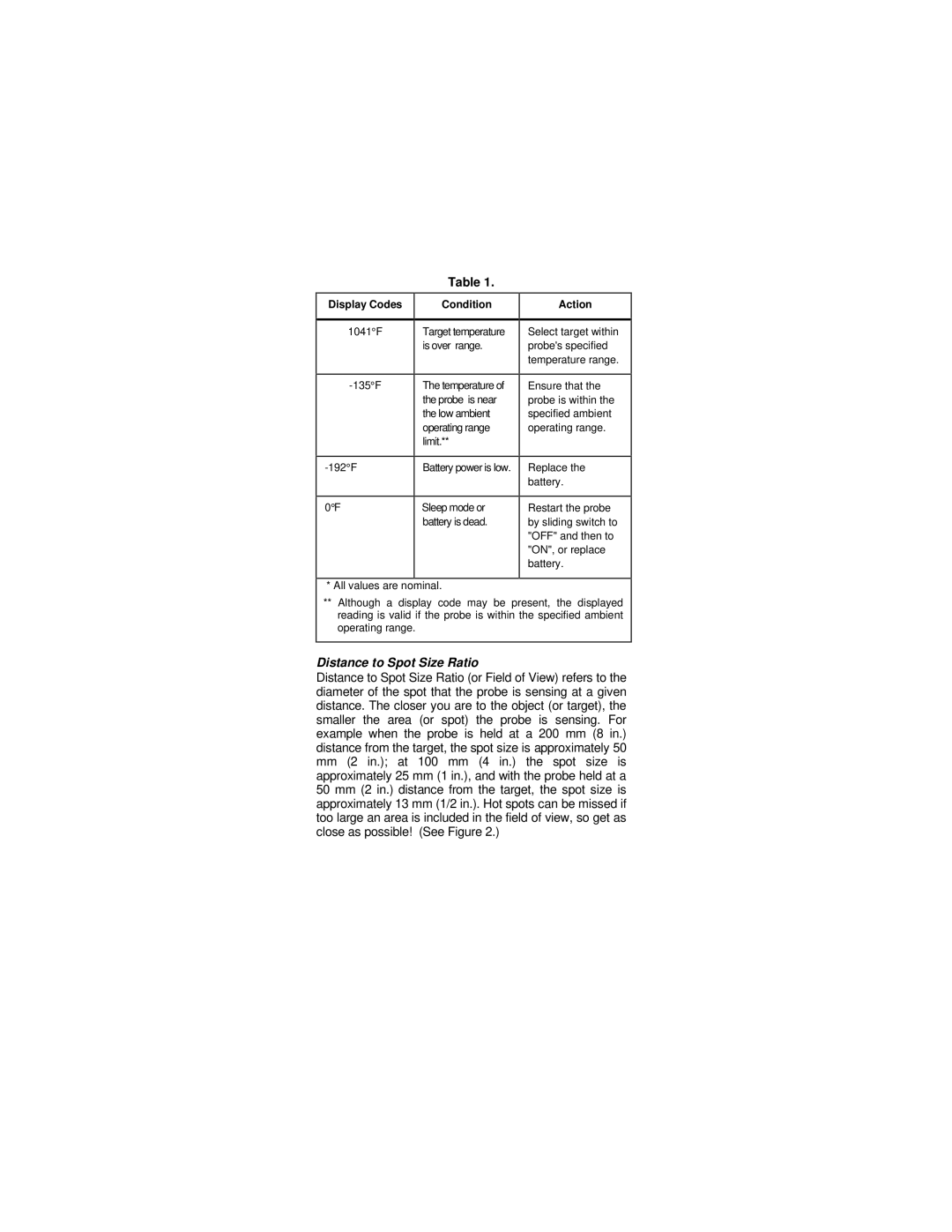
Table 1.
Display Codes | Condition | Action |
1041°F | Target temperature | Select target within |
| is over range. | probe's specified |
|
| temperature range. |
The temperature of | Ensure that the | |
| the probe is near | probe is within the |
| the low ambient | specified ambient |
| operating range | operating range. |
| limit.** |
|
Battery power is low. | Replace the | |
|
| battery. |
0°F | Sleep mode or | Restart the probe |
| battery is dead. | by sliding switch to |
|
| "OFF" and then to |
|
| "ON", or replace |
|
| battery. |
* All values are nominal.
**Although a display code may be present, the displayed reading is valid if the probe is within the specified ambient operating range.
Distance to Spot Size Ratio
Distance to Spot Size Ratio (or Field of View) refers to the diameter of the spot that the probe is sensing at a given distance. The closer you are to the object (or target), the smaller the area (or spot) the probe is sensing. For example when the probe is held at a 200 mm (8 in.) distance from the target, the spot size is approximately 50
mm(2 in.); at 100 mm (4 in.) the spot size is approximately 25 mm (1 in.), and with the probe held at a 50 mm (2 in.) distance from the target, the spot size is approximately 13 mm (1/2 in.). Hot spots can be missed if too large an area is included in the field of view, so get as close as possible! (See Figure 2.)
